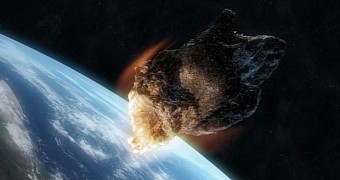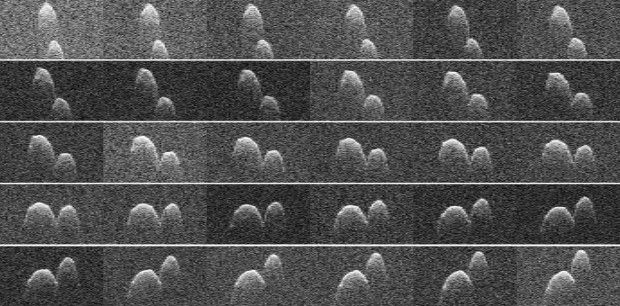A few days ago, a massive asteroid flew by our planet. The space rock made its closest approach on July 24, at 9:55 p.m. PDT (12:55 a.m. EDT) on the dot, when it came as close as 4.5 million miles (7.2 million kilometers) to our planet.
Not wanting to let this opportunity to learn a bit more about our Solar System slip by them, researchers pointed NASA's Deep Space Network antenna at Goldstone, California, and the National Science Foundation Bank Telescope in West Virginia at the space rock and managed to image its silhouette.
The images, obtained by bouncing radar signals off the asteroid's surface, were then made into a video. The footage in question, released by NASA just yesterday and available below, comprises individual views of the space rock obtained over about 7 hours and 40 minutes of continuous observation.
“The Goldstone antenna beams a radar signal at an asteroid and Green Bank receives the reflections. The technique, referred to as a bistatic observation, dramatically improves the amount of detail that can be seen in radar images,” NASA explains.
The asteroid looks like a cosmic peanut
The asteroid that flew by our planet this past July 24 is called 1999 JD6. It comprises two lobes and resembles a space peanut of sorts. One measuring an astounding 1.2 miles (2 kilometers) from one end to the other, that is. To scientists, such asteroids are known as contact binaries.
Although not a common sight in our Solar System, contact binaries are not exactly a novelty either. “Radar imaging has shown that about 15% of near-Earth asteroids larger than 600 feet [180 meters], including 1999 JD6, have this sort of lobed, peanut shape,” explains NASA scientist Lance Benner.
Judging by its current orbit, astronomers say it won't be until 2054 that 1999 JD6 will approach our planet again. The upcoming visit will bring the space rock at approximately the same distance to our planet as this past July 24 flyby. Worry not, it's unlikely the orb will hit us.
4.5 million miles (7.2 million kilometers) might be an infinitesimal distance in cosmic terms, but it's still the equivalent of 19 times the distance between Earth and the Moon. So, not, the asteroid will by no means get close enough to our planet to pose a threat.

 14 DAY TRIAL //
14 DAY TRIAL // 


